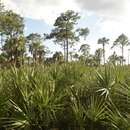Comments
provided by eFloras
Ophioglossum nudicaule is much less common than O . crotalophoroides ; they often occur together and are found in the same or similar habitats. The gametophytes of O . nudicaule are typical for the genus (M.R. Mesler et al. 1975). A given colony may be made up of small, medium, or large plants (W.H. Wagner Jr., C. M. Allen, and G.P. Landry 1984).
- license
- cc-by-nc-sa-3.0
- copyright
- Missouri Botanical Garden, 4344 Shaw Boulevard, St. Louis, MO, 63110 USA
Description
provided by eFloras
Roots yellowish to pale brown, to 15 per plant, 0.2-0.8mm diam., proliferous at wide intervals. Stem upright, 0.2-1.2 cm, 1-5 mm diam., commonly 2-3 leaves per stem. Trophophore stalk to 0.8 cm, 0.1-0.2 times length of trophophore blade. Trophophore blade spreading, usually plane when alive, green, dull, largest leaves drying with pale central band, ovate to lanceolate, thin, blades less than 0.4 × 0.3 cm in many colonies but blades large, to 4.5 × 1.7 cm in other colonies, herbaceous, base gradually tapered, apex with short apiculum; venation finely complex-reticulate, areoles with only included veinlets in smaller blades but with numerous secondary areoles in largest blades. Sporophores arising at or near ground level, 2-6 times as long as trophophore; sporangial clusters 0.5-1.5cm, 1.5 mm or less wide, mostly with 5-12 pairs of sporangia, apiculum 0.5-1 mm.
- license
- cc-by-nc-sa-3.0
- copyright
- Missouri Botanical Garden, 4344 Shaw Boulevard, St. Louis, MO, 63110 USA
Distribution
provided by eFloras
Ala., Ark., Fla., Ga., La., Miss., N.C., Okla., S.C., Tex.; Mexico; West Indies; Central America; South America; Asia; Africa; Pacific Islands.
- license
- cc-by-nc-sa-3.0
- copyright
- Missouri Botanical Garden, 4344 Shaw Boulevard, St. Louis, MO, 63110 USA
Habitat
provided by eFloras
Leaves appearing in latter half of winter and early spring, sometimes with second flush in same year after heavy rains. Second-growth fields, vacant lots, roadside ditches, and lawns; 0-90m.
- license
- cc-by-nc-sa-3.0
- copyright
- Missouri Botanical Garden, 4344 Shaw Boulevard, St. Louis, MO, 63110 USA
Synonym
provided by eFloras
Ophioglossum dendroneuron E.P. St.John; O. ellipticum Hooker & Greville; O. mononeuron E.P. St.John
- license
- cc-by-nc-sa-3.0
- copyright
- Missouri Botanical Garden, 4344 Shaw Boulevard, St. Louis, MO, 63110 USA
Comprehensive Description
provided by North American Flora
Ophioglossum tenerum Mett.; Prantl, Ber. Deuts
Bot. Ges. 1: 352. 1883.
Ophioglossum pusillum Nutt. Gen. 2 : 248. 1818. Not O. pusillum Raf. 1814.
Plant 1.5-10 cm. high, often in sand; rhizome stout, cylindric or globose, 2-5 mm. long, 1.8-5 mm. thick; roots persistent, fibrous, about 0.5 mm. thick; leaves usually two (1-4) ; commonstalk 0.1-2 cm. long, hypogean ; lamina sessile or short-stalked, mostly plane and nearly horizontal, elliptic to broadly ovate, acute or obtuse below, acute above, usually not apiculate, 0.4-2 cm. long, 0.2-0.9 cm. broad, the basal veins 3-5, the median vein slightly the strongest, emitting one or two branches, the areolae divergent from the median vein, mostly small, short and broad, the largest with several free and anastomosing included veinlets; sporophyl slender, 1.5-8 cm. long, the spike rather slender, 2-12 mm. long, 1-2 mm. thick, apiculate; sporangia 2-18-jugate; spores .03-.04 mm. thick, finelypitted and verrucose.
Type locality : Near Savannah, Georgia. Distribution : South Carolina to Louisiana ; Cuba.
- bibliographic citation
- Lucien Marcus Underwood, Ralph Curtiss BenedictWilliam Ralph Maxon. 1909. OPHIOGLOSSALES-FILICALES; OPHIOGLOSSACEAE, MARATTIACEAE, OSMUNDACEAE, CERATOPTERIDACEAE, SCHIZAEACEAE, GLEICHENIACEAE, CYATHEACEAE (pars). North American flora. vol 16(1). New York Botanical Garden, New York, NY

